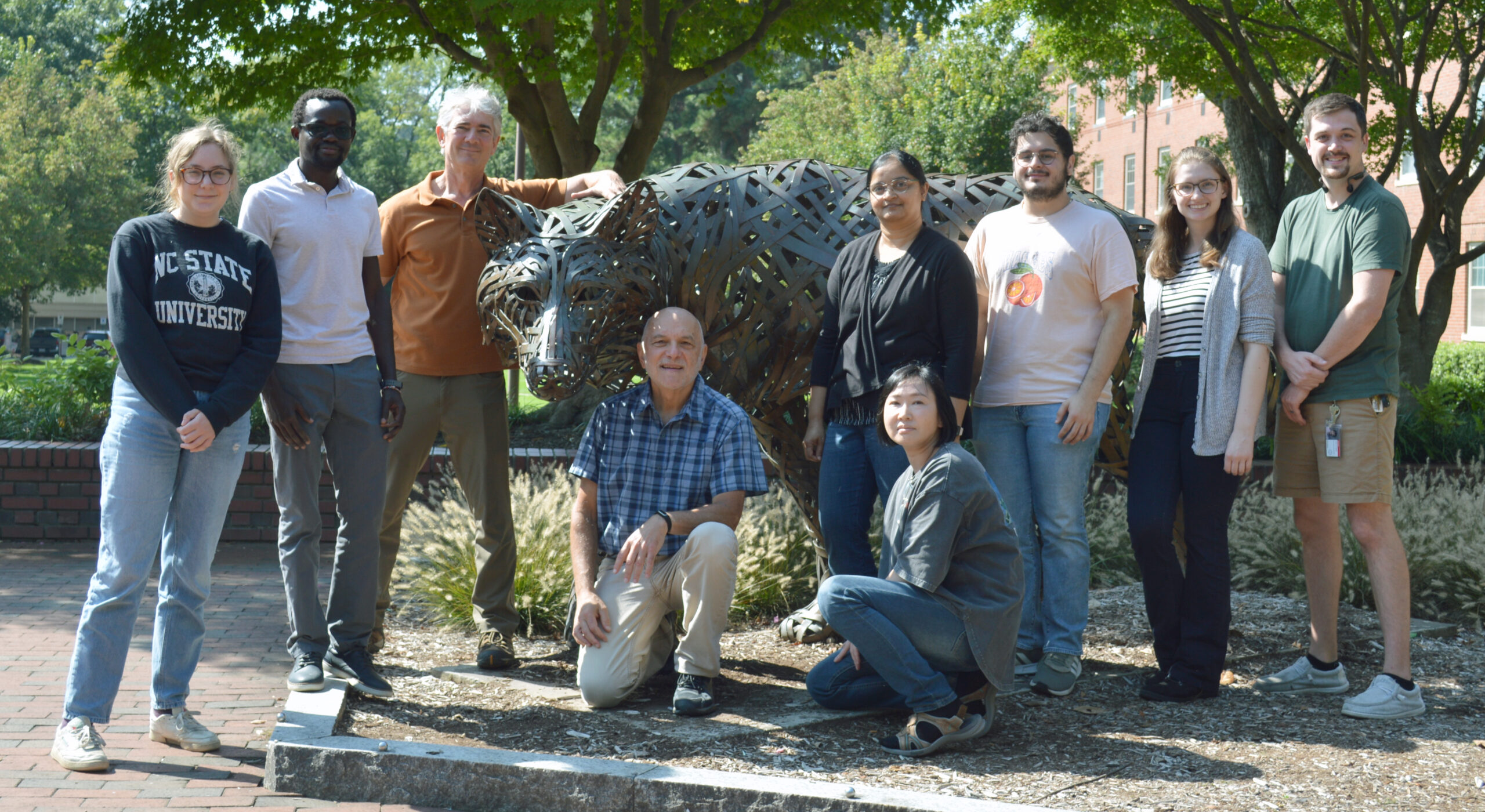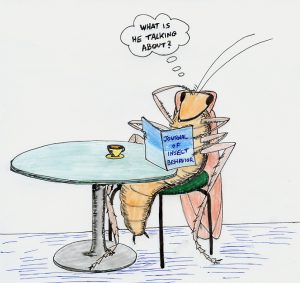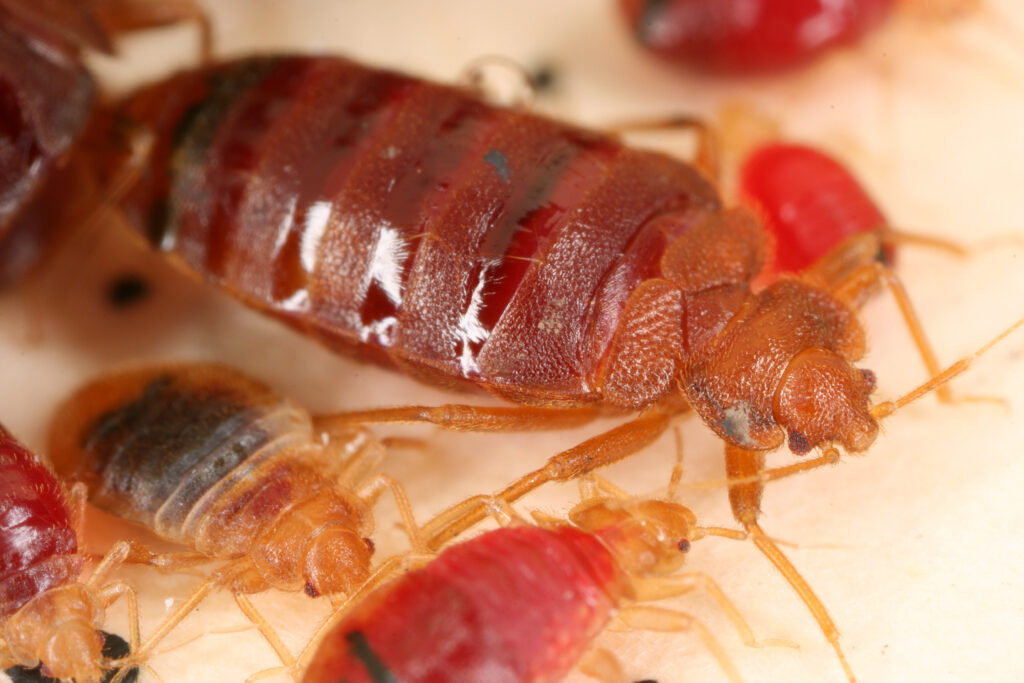Overview

Lab group — 2023
| Donate Now | Please note that this Donor Tab links to “Entomology Research Science Fund“
Fund raising efforts for the Entomology Science Research Fund operate under the auspices of the North Carolina Agricultural Foundation, Inc., a 501(c)3 non-profit, tax-id 56-6049304. Your gift will support the Department of Entomology & Plant Pathology, including but not limited to support of the Schal Urban Entomology Lab. You will receive an official receipt for your donation. |
Lab History and Mission
In 1994, the Department of Entomology at North Carolina State University completed renovations of the Blanton J. Whitmire Urban Entomology laboratories. We take an integrative approach to urban entomology, with studies ranging from molecular and cellular investigations to pest management and community-wide interventions. Our goal is to address the public health, veterinary, aesthetic, and economic needs of residential, industrial and agricultural communities by developing and disseminating information on pests of homes and other human-made structures. We focus much of our Urban Entomology research on cockroaches and bed bugs. In addition, our broad interests in chemical ecology, behavioral endocrinology, and insect physiology includes studies of moths, mosquitoes, sand flies, ants, and termites. See Research Projects for more details.
Why Cockroaches?
Cockroaches provide both an excellent model system for fundamental research in entomology as well as a formidable subject for mission-oriented research on innovative strategies and tactics toward the implementation of integrated approaches (IPM) in the management of pest cockroach populations. We strive for a dynamic balance between these two approaches. To accomplish this our research uses an integrative approach, addressing questions at the molecular, cellular, physiological, behavioral, and ecological levels. We thus value suborganismal, organismal, population and comparative studies of both pest and non-pest cockroach species.
Cockroaches (order Blattodea) are a primitive, yet highly diverse group of insects. They live in temperate as well as tropical habitats, deserts, caves and hollow trees, bromeliad pools, in the nests of birds and social insects, and in association with human-built urban and agricultural structures, sewers, and dump sites. They also exhibit a variety of reproductive strategies, including obligatory and facultative parthenogenesis, oviparity, ovoviviparity, and viviparity. Their social organization ranges from solitary individuals to genetically related families with monogamous parents. Some species have long served as models for studies of invertebrate biochemistry, endocrinology. neurobiology, and behavior. In addition, both volatile and contact pheromones have been characterized chemically and behaviorally in some species. Their large size facilitates biochemical and physiological investigations.

Cockroaches are major urban pests and cockroach infestations spread disease and serve as a major source of allergens that can cause asthma. Our overall goal is to help shape new approaches on environmentally-compatible pest control through basic and applied research on cockroaches.
by Dorit Eliyahu: Inspired by the long-held dogma that Blattella germanica females do not produce a sex attractant, and our discovery of a calling behavior and release of a volatile sex pheromone by sexually receptive females
Bed Bugs
Recently, bed bugs have resurged as a serious new and growing problem, not only in North America, but also globally. Unlike infestations in the early part of the 20th century, which were limited to places with high turnover, such as hotels, military bases, homeless shelters, and prisons, bed bug infestations are now being reported from a variety of locations in the urban and suburban environment, including single-family dwellings, apartments, rooming houses, public schools, theaters and hospitals. While bed bug infestations occur across all social and economic classes, the most severe infestations occur among the socially disadvantaged, including low-income communities.

Control of bed bugs today offers several challenges including: 1) lack of chemical options; 2) insecticide resistance to the group of insecticides commonly used in the USA; 3) lack of understanding of their biology and behavior among pest control operators and customers; and 4) lack of effective monitoring tools to detect infestations in a timely manner.
Our lab maintains about 40 strains on bed bugs, using an artificial feeding system using rabbit blood. We are especially interested in the following issues:
- Chemical ecology – sex pheromones, aggregation pheromones, cuticular hydrocarbons;
- How do bed bugs find a host using heat, CO2, and various host odors;
- Mechanisms of host acceptance and rejection;
- Genetics and genomics, especially of olfaction;
- Mechanisms of insecticide resistance, frequency of kdr mutations;
- Population genetics, sources of infestations, colonization dynamics (with Warren Booth & Ed Vargo);
- Aggregation dynamics and inbreeding;
- Role of bed bug-produced histamine in allergic disease and asthma;
- Disease transmission.
